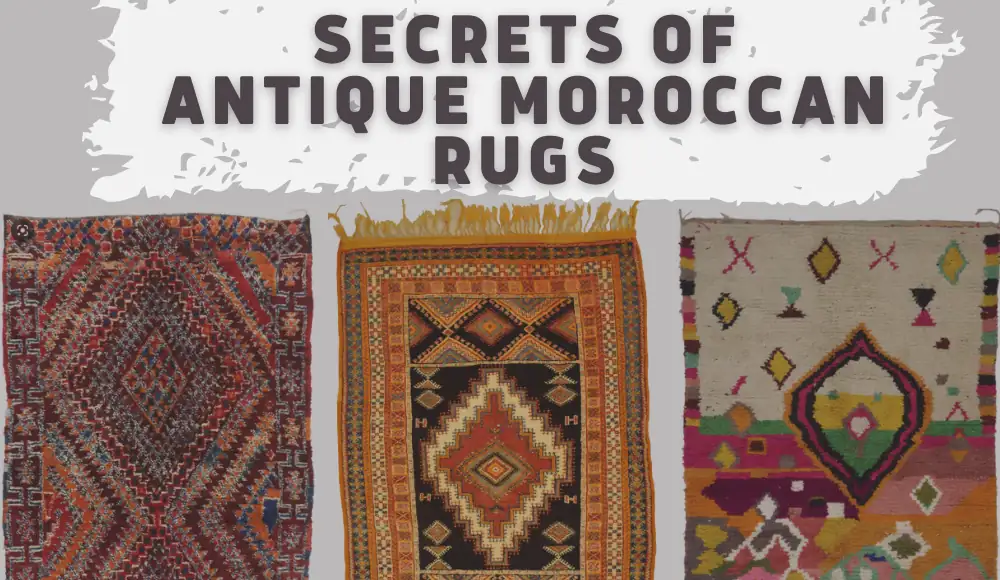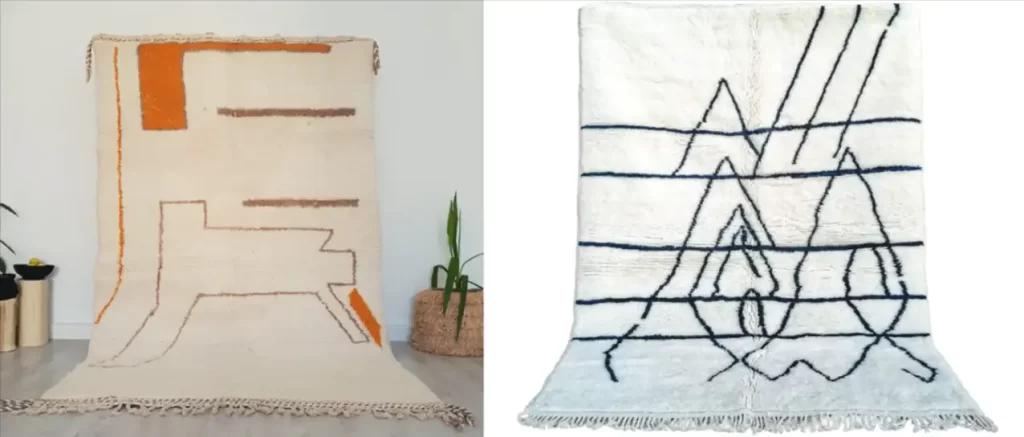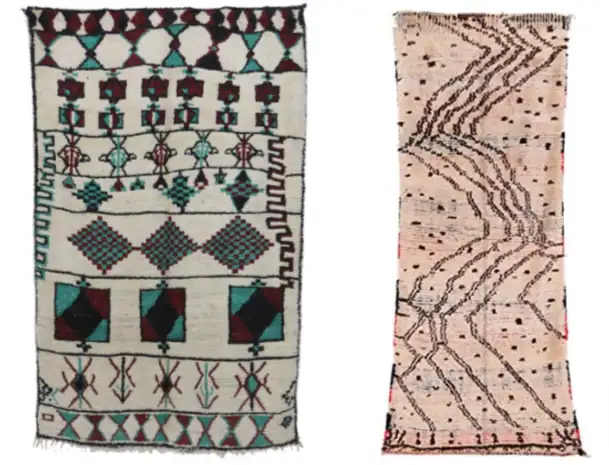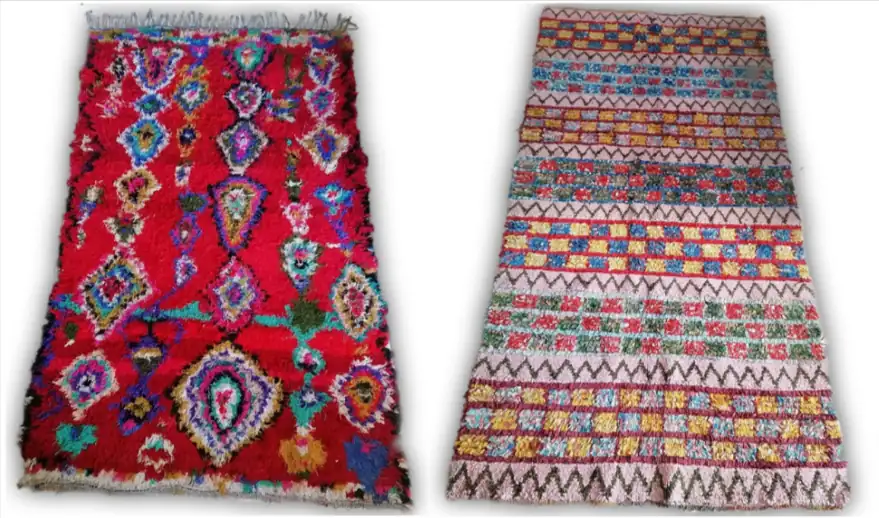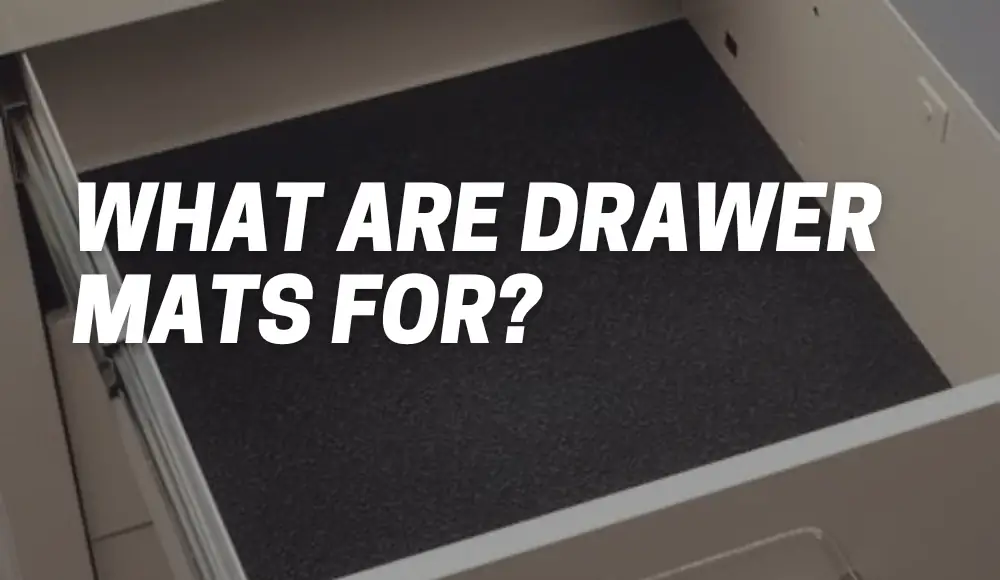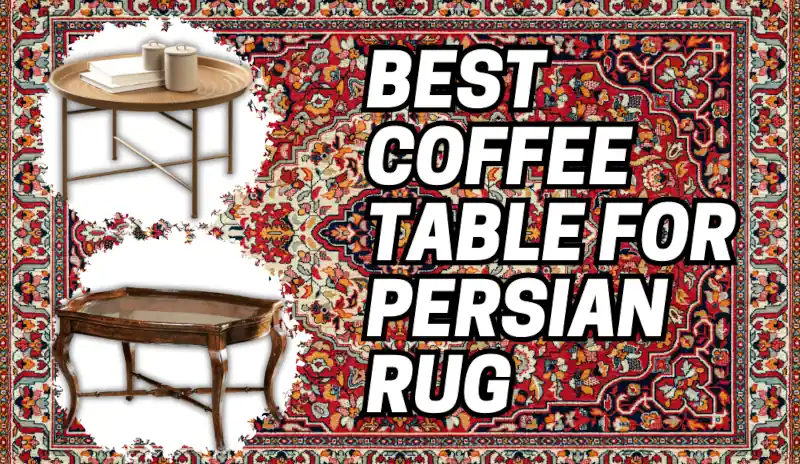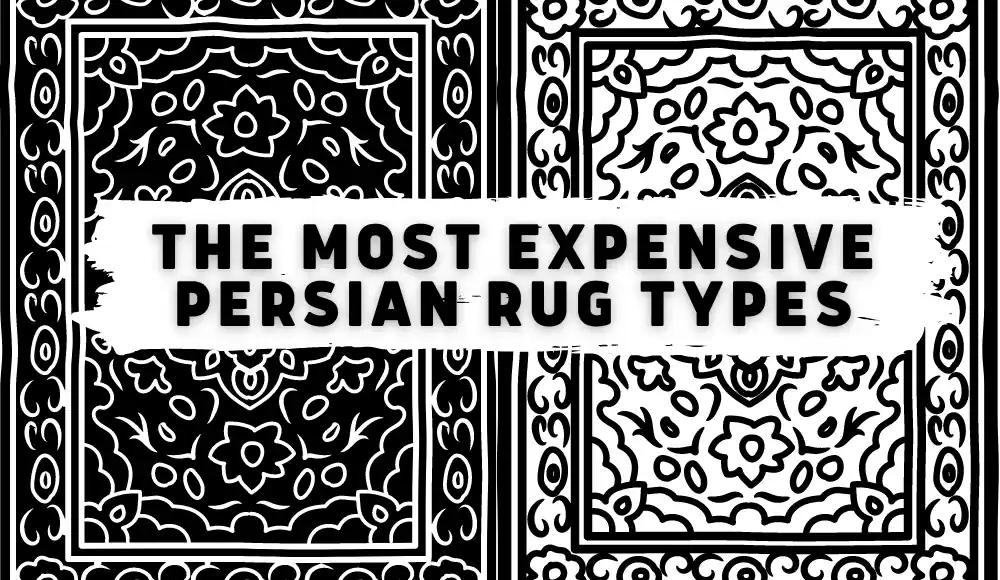Last updated on August 15th, 2023 at 01:30 am
If you’re looking for a way to add warmth, texture, and character to your home decor, you can’t go wrong with an antique Moroccan rug. These beautiful hand-woven rugs have been crafted by skilled artisans in the Atlas Mountains of Morocco for centuries, and they continue to be highly sought-after by interior designers and collectors around the world.
In this article, we’ll explore the history of Moroccan rugs, the different types available, and why antique rugs are so important in today’s interior design landscape.
A Brief History of Moroccan Rugs
Moroccan rugs have been a staple of Berber culture in North Africa for more than a thousand years. According to the different sources, one of the oldest known Berber rugs dates back to the 18th century CE and is identified as the Chiadma rug. Chiadma is an Arabized Berber tribe on the Atlantic coast of Morocco.
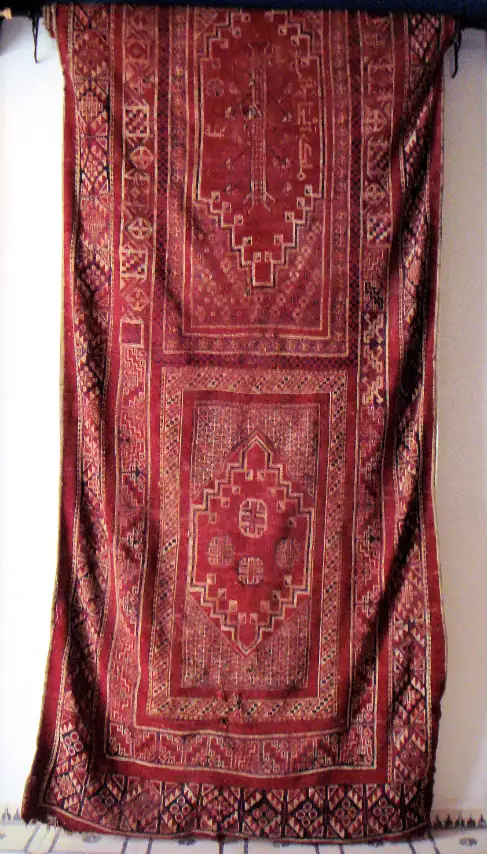
Early on, these rugs were primarily used for practical purposes like insulation from cold floors or as bedding. However, over time they began to take on more ornamental qualities.
In the early 20th century, Moroccan rugs gained international recognition due to their unique style and high-quality craftsmanship.
The French protectorate over Morocco (1912-1956) led to increased demand for these textiles as European-style homes began appearing throughout cities such as Tangier and Marrakech.
The Importance of Antique Moroccan Rugs in Interior Design Today
Today’s homeowners are increasingly drawn towards unique pieces that showcase craftsmanship from an earlier era while bringing warmth, and color depth that can only be found with vintage goods like antique Moroccan rugs.
Antique Moroccan carpets offer a sense of authenticity that is hard to come by with modern designs — each one is unique due to their handmade construction process which takes months if not years!
Interior designers often use antique Moroccan rugs as statement pieces to ground a room or to tie together color palettes. The versatility of these rugs means they can be used in any style of home from modern minimalist to traditional bohemian chic.
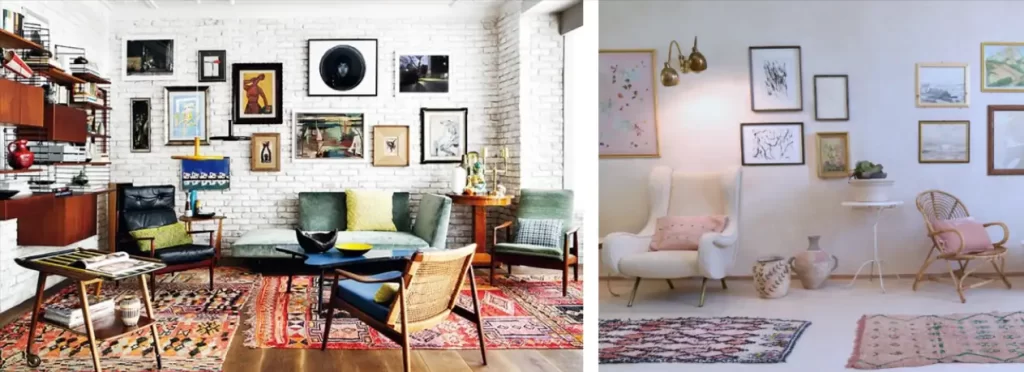
Types of Antique Moroccan Rugs
Beni Ourain Rugs: The Most Popular Type with a Simple, Neutral Design
Beni Ourain rugs are perhaps the most recognizable type of antique Moroccan rug, as well as vintage Moroccan rugs. These rugs are handwoven by the Berber tribes living in the Atlas Mountains of Morocco.
They are known for their distinctive geometric designs and neutral color palette, which typically features shades of ivory, beige, and black. What makes Beni Ourain rugs so appealing to interior designers is their versatility.
They can be used in a variety of settings, from modern minimalist apartments to rustic countryside homes. Their understated elegance complements any decor style, making them a worthwhile investment for anyone looking to add a touch of Moroccan charm to their home.
Azilal Rugs: Colorful and Vibrant with Abstract Patterns
Azilal rugs are another popular type of antique Moroccan rug that features bold colors and abstract designs. These rugs get their name from the Azilal region where they originated, which is known for its rugged landscape and unique culture.
Unlike Beni Ourain rugs, Azilal rugs feature bright colors like reds, blues, greens, and pinks that create striking contrasts against the natural wool fibers used in their construction. The abstract patterns on these rugs are usually an asymmetrical and complex testament to the skilled craftsmanship required to produce them.
Because they are so colorful and vibrant, Azilal rugs make excellent statement pieces in any room where they are placed. They pair well with solid-colored furniture pieces or other textiles that complement their unique color schemes.
Boucherouite Rugs: Made from Recycled Materials and Known for Their Unique Designs
Boucherouite pronunciation: “Boucherouite” is pronounced as “boo-shay-reet”. It’s a Moroccan-Arabic phrase for reused clothing.
Boucherouite meaning: Boucherouite is a term used to describe Moroccan rag rugs made from recycled materials like cotton, wool, and synthetic fibers. These rugs are typically produced in rural areas of Morocco where resources are scarce, making them an eco-friendly alternative to traditional Moroccan rugs. What sets Boucherouite rugs apart from other antique Moroccan rugs is their unique designs.
They often feature bold color combinations and quirky patterns that reflect the personality of the artisan who made them. Some Boucherouite rugs even incorporate words or phrases in Arabic script, adding another layer of meaning to their already rich cultural heritage.
Because they are made from recycled materials, Boucherouite rugs tend to be less durable than other types of antique Moroccan rugs.
However, their affordability and one-of-a-kind designs make them an attractive option for those looking for a statement piece that won’t break the bank.
Materials Used in Antique Moroccan Rugs
The Durability and Softness of Wool
Wool is by far the most commonly used material in Moroccan rugs. It is easy to see why this is the case since wool is an ideal material for rug-making due to its durability and softness. Moroccan sheep wool has a natural lanolin content which makes it naturally stain resistant, making these rugs practical for everyday use.
The wool used in Berber or Beni Ourain rugs from Morocco is hand-spun and has a high pile, giving them a luxuriously plush quality. These rugs will last for years if cared for properly.
The Luxurious Quality of Silk
Silk is also used to make high-end antique Moroccan rugs. These luxurious pieces often have intricate designs with fine detailing that can only be achieved with silk fibers.
Silk threads are much finer than wool threads, which allows weavers to create more detailed patterns within the same amount of space.
Antique silk Moroccan carpets are considered an investment because they are less common than their wool counterparts and require more skill and care to produce.
The Rich Colors of Vegetable Dyes
Moroccan rug makers traditionally use natural dyes derived from vegetables or other plant-based materials such as henna, indigo, saffron, pomegranate skins, and madder root; each plant provides different hues that create a rainbow effect when mixed together.
Vegetable dyes produce a range of colors that differ from chemical dyes by having subtle variations within each color which gives antique Moroccan carpets their unique look.
The process of dyeing takes longer using natural dyes but creates an overall more authentic-looking rug with rich colors, unlike any other synthetic dyeing technique that could achieve.
When combined with natural wool or silk fibers woven on traditional looms by skilled artisans – who have been passing down their craft for centuries – these materials create antique Moroccan rugs that exude a sense of warmth and history unmatched by mass-produced products.
Design Elements of Antique Moroccan Rugs
Geometric Patterns: The Essential Element
One of the most distinctive design elements of antique Moroccan rugs is the use of geometric patterns. These patterns are often featured prominently in the center of the rug, with symmetrical shapes and lines creating a balanced and harmonious design.
The geometry found in Moroccan rugs is inspired by Islamic art and architecture, which emphasizes the use of geometry as a means to express order and harmony. The most common geometric patterns found in antique Moroccan rugs include diamonds, triangles, squares, and hexagons.
These shapes are often repeated and interwoven to create intricate designs that are both pleasing to the eye and symbolic in nature. The use of these symmetrical patterns not only creates a visually stunning rug but also gives it a sense of balance and harmony.
Tribal Motifs: A Window into Culture
Another major design element seen in antique Moroccan rugs is tribal motifs.
Many tribes throughout Morocco have their own unique symbols that reflect their cultural identity and history. These designs can range from abstract shapes to more representational images such as animals or people.
Tribal motifs are often used as a way to tell stories or convey deeper meanings within the rug’s design. For example, some tribal designs may represent fertility or protection from evil spirits, while others may symbolize important events in a tribe’s history.
Color Palettes: Bold Hues for Striking Contrast
The bold colors used in antique Moroccan rugs help make them stand out among other styles of carpets. Common colors include red, blue, green, yellow, orange, pink, and purple – sometimes all together!
Unlike other types of carpets where muted colors are preferred for subtlety sake (like Persian carpets), Moroccan wool carpets tend to be more vibrant with an emphasis on the contrast between light and dark colors. This contrast is achieved through the use of a technique called abrash, where the wool is dyed in batches that can result in slight variations in color.
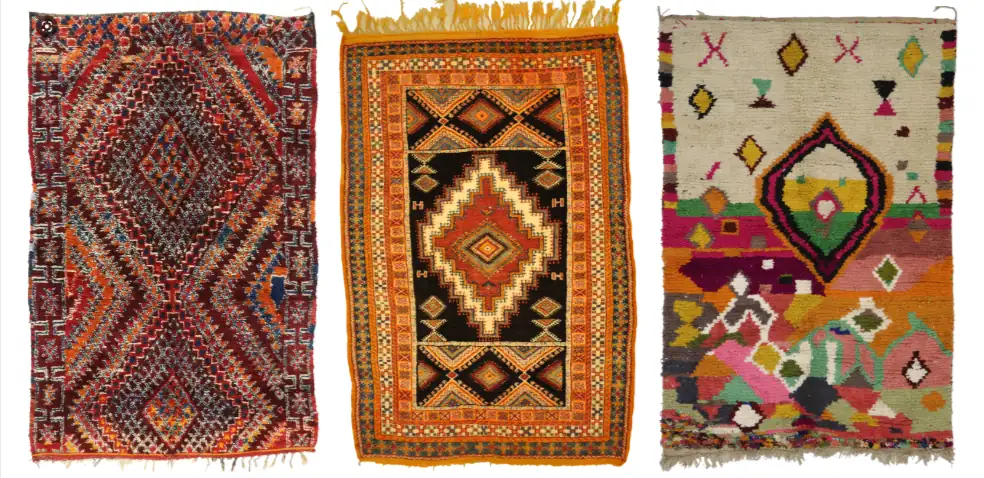
What is the abrash effect? The abrash effect refers to the natural variation in color that occurs in handwoven rugs, particularly those made with natural dyes. This variation is caused by variations in the dyeing process, such as changes in water temperature or differences in the dye batches.
Abrash can create a beautiful, subtle shading effect that adds depth and character to a rug. It is often considered a desirable quality in handwoven rugs and can increase their value. In some cases, abrash may also be intentionally created by the weaver to add visual interest to the design.
This unique approach to dyeing wool creates a rug with depth and texture, and colors that are often not found in other carpets. The bold hues used in Moroccan rugs not only create a striking visual impact but also reflect the vibrant culture of Morocco.
Care and Maintenance Tips for Antique Moroccan Rugs
Regular vacuuming to remove dirt and debris
One of the most important things you can do to keep your antique Moroccan rug looking its best is to vacuum it regularly. Dirt, dust, and debris can build up in the fibers of the rug over time, causing it to look dull and dingy. To prevent this, use a vacuum with a beater bar or brush attachment to loosen and remove the particles from the rug.
Avoid using harsh chemicals or cleaning solutions
When it comes to cleaning your antique Moroccan rug, it’s important to avoid using harsh chemicals or cleaning solutions. These can damage the delicate fibers of the rug and cause discoloration or fading.
Instead, opt for a gentle cleaning solution made from natural ingredients like vinegar or baking soda. You can also hire a professional rug cleaner who specializes in antique rugs.
Conclusion
Antique Moroccan rugs are a beautiful addition to any home decor, but they require proper care and maintenance to stay looking their best. By following these care tips, you can help your rug last for generations to come.
Remember that each antique Moroccan rug is unique and deserves special attention when it comes to caring for it properly. With a little bit of effort, you can ensure that your antique Moroccan rug remains a cherished part of your home for many years to come.
